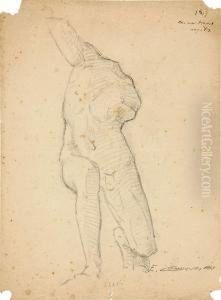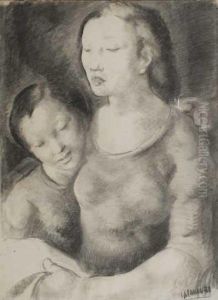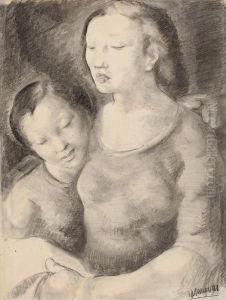Enric Casanovas Paintings
Enric Casanovas Roy was a prominent Catalan sculptor, born in Barcelona, Spain, in 1882. He emerged as a crucial figure in the Catalan Modernisme movement, which was the regional version of Art Nouveau that flourished at the turn of the 20th century. Casanovas was deeply influenced by the works of Antoni Gaudí and Josep Llimona, embedding a unique blend of modernity and tradition in his sculptures.
Casanovas' work is characterized by its strong emotional content, often exploring themes of spirituality, nationalism, and human suffering. He was adept in various mediums, including stone, wood, and bronze, showcasing a versatility that enabled him to excel in both public monuments and more intimate, personal works. His sculptures are noted for their expressive, sometimes almost tortured, appearance, with a profound sense of texture and movement.
In the early 20th century, Casanovas became involved with the artistic community at Els Quatre Gats, a famous café in Barcelona that was a hub for Catalan artists, writers, and intellectuals of the time. This period was crucial for the development of his artistic identity, as he engaged with avant-garde ideas and began to define his distinct style. Throughout his career, Casanovas also engaged deeply with Catalan nationalism, a sentiment that infused much of his work with a sense of cultural and regional identity.
Despite the acclaim he received during his lifetime, Enric Casanovas remained a somewhat enigmatic figure, often shunning the spotlight to focus on his craft. His contributions to sculpture and to the modernist movement in Catalonia were significant, leaving a lasting legacy in the region's cultural heritage. Casanovas passed away in Barcelona in 1948, leaving behind a body of work that continues to be celebrated for its emotional depth and technical mastery.


